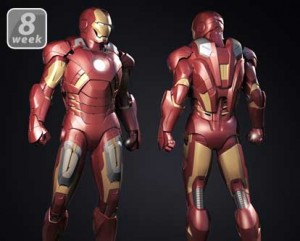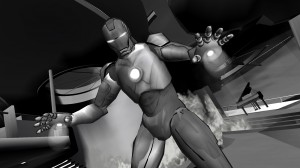 If you are interested in how exactly they grind up the digital eyes, lips, and assholes that go into your CGI hot dogs these days, then CG Society is a site you should be keeping an eye on. As American Cinematographer does each month with the art and science of motion-picture lighting and capturing, CG Society delivers straightforward, nuts-and-bolts interview pieces that paint the picture of a film’s behind-the-scene workflow. The catch is that they’re is an assumption you know something about this stuff, so they give it to you raw and uncut.
If you are interested in how exactly they grind up the digital eyes, lips, and assholes that go into your CGI hot dogs these days, then CG Society is a site you should be keeping an eye on. As American Cinematographer does each month with the art and science of motion-picture lighting and capturing, CG Society delivers straightforward, nuts-and-bolts interview pieces that paint the picture of a film’s behind-the-scene workflow. The catch is that they’re is an assumption you know something about this stuff, so they give it to you raw and uncut.
Still, if you brave the esoteric terminology you’re bound to hear some interesting stories from a film’s production that you might not otherwise be exposed to. For example, the team behind Iron Man 3 actually spent six weeks working around Robert Downey Jr’s absence due to a broken leg. In the case of sequences that couldn’t be delayed, this meant doubles were used or scenes were shot as plates so the actor could be comped in later. Face and body replacement later integrated RDJ in ways that, for the most part, I know I never spotted. Obviously many of the action sequence bear evidence of digital trickery and CG  stunt doubles and such, but the tricky thing about VFX these days is that you’re as likely to see CGI in quiet scenes that seem completely normal as you are in the big spectacle extravaganzas.
stunt doubles and such, but the tricky thing about VFX these days is that you’re as likely to see CGI in quiet scenes that seem completely normal as you are in the big spectacle extravaganzas.
In amongst it all, shooting was delayed when Robert Downey Jnr (RDJ) broke his leg during a shoot day and that put the schedule into a tailspin for six weeks. It was during this time that VFX studios very much came to the rescue. “Together with face replacement and full body doubles, somewhere there was a solution to the problem of not having Robert Downey Jnr on set for the time,” explains Townsend. “The collective VFX Supes and unit leads ran into a room as soon as the incident happened to try to ascertain what sequences could they shoot.” There were locations that were locked in that the first unit had to go to. The final sequence on the beach was shot with a body double.
You’ll also get a glimpse of just how many different companies (17) worked in concert with one another to deliver work of all varieties. It’s hard not to see what is so unsustainable about many VFX company’s business models, what with these last minute changes and 24/7 shifts…
It was through these restrictions that the Trixter crew developed how each piece would interact and connect with each other in a concept kind of way. They had to do this because the first sequence they were to work on was for the Comic-Con trailer for the Summer.
That’s enough from me- the piece is an extensive one, so it will take a chunk of time. Well worth it though, if you like peeking behind the curtain as much as admiring the curtain in the first place.